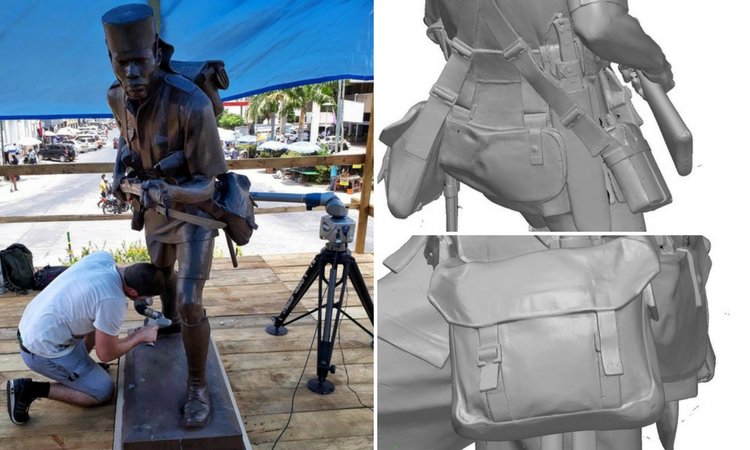19 February 2018
3D technology helps restore African memorials to their former glory
The Commission has begun a project to document, restore and preserve its unique memorials in Africa.

The Memorials to the Missing in Nairobi, Mombasa, Dar es Salaam and later Abuja, were constructed after the First World War to commemorate African troops and carriers who died during the East African campaign and have no known grave.
For the first phase of the conservation project, 3D scans have been taken of the memorials’ sculptures and plaques in East Africa to create a permanent digital record of them, and to help manufacture elements of the sculptures in need of repair.
CWGC’s Technical Supervisor for Africa David McDonald, who is leading the project, said: “The memorials were all created in the UK over a period of seven years by sculptor James Alexander Stevenson. Once complete, each sculpture was displayed at the Royal Academy of Arts in London for members of the public to view, before being shipped to Africa and erected in prominent locations beginning with Nairobi in 1924, Mombasa in 1926, and Dar es Salaam in 1927. While we have very detailed drawings of the stone plinths and locations of the memorials, we did not previously hold any drawings, sketches or designs for the sculptural elements of the monuments, which we identified as being a significant risk.
“This project will enable us to create a permanent digital record of the memorials and allow us to accurately repair damage caused over the years to ensure they are preserved for the future.”

Nairobi African Memorial in Kenya, left, and Dar Es Salaam African Memorial in Tanzania, right
The second phase of the project to clean and repair the memorials will take place in June.
David added: “These ‘Askari’ memorials are held in very high regard locally, and we have received a huge amount of positive feedback both on the street, and through the local media.
“In June we are planning to begin the restoration phase with work beginning in Mombasa as the memorial there has suffered the most significant damage over the years. The Porter of the Carrier Corps has lost his ‘staff’ for example, and a number of the ‘Askari’ have straps or slings missing from their rifles.
“The beauty of the 3D Scanning project is that we can accurately replicate a complete staff or strap from another memorial where that piece is still intact, and through a series of processes we can manufacture a piece within sub-millimetre accuracy.”
The Commission also plans to install information panels near the monuments to explain their history and share information about the people they commemorate.
Later this year, the Askari and Carrier which form part of the Abuja Memorial in Nigeria will also be scanned as part of the project. A dedication service was held in August last year for the newly restored memorial, constructed by the CWGC in Abuja to honour more than 2,000 African servicemen who died in the First and Second World Wars.

